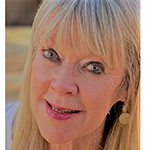Might You Have (Gasp) Kareishuu ?
On the list of “First World problems to worry about,” it’s definitely not number one – but for some kareishuu – it holds a spot near the top. Kareishuu is the Japanese term for — literally “the smell of gaining years.” Most Americans refer to it, sometimes with disgust, anxiety, or a sneer, as “old people smell.”
Is help at hand? I admit it, I googled “soap for old people smell,” got a bunch of hits and was reassured that Amazon could have some solutions on my front porch within days. Among the options are persimmon soap, a pouch to place around the house (1 per 150 square feet) to soak up those nasty old odors like a sponge and spray on odor eliminator. Other ”experts” talk about eating right, exercising and drinking green tea to ward off old people smell, but I couldn’t find any studies to back up those suggestions.
So I delved deeper into the science. Here’s what I found out:
There is age-related body odor, and it does change as we get older. In a published report, researchers long ago said the origin is 2-nonenal, a compound ”with an unpleasant greasy and grassy odor” detected only in older subjects, those 40 and up in the group they tested, who were 26 to 75 years old.
Later on, other research has suggested that one person’s ”disgusting” is another person’s “delightful,” or at least “less than disgusting.” These scientists collected body odor from the armpits of men and women ages 20-30, 45-55 and 75-95. They asked 41 participants, ages 20 to 30 (and not the same ones who contributed their BO to science) to rate the intensity and pleasantness (or unpleasantness) of the samples. Surprise: Older people’s BO was rated as less intense and less unpleasant than either of the other age groups.
Nonenal Studies
Back to the Japanese, who continue to study 2-nonenal. Shinobu Nakanishi, PhD, a Japanese researcher at a cosmetics company, and his colleagues did an experiment on cultured human keratinocytes, a kind of epidermal cell that is important for skin repair. They found that nonenal decreased viability and promoted cell death in these cells. In a 3-D model that mimicked the skin’s epidermis, they also found the nonenal reduced skin thickness.
The suggestion is that nonenal could be involved in the thinning of the skin that’s well known to occur with age—and make us look older, no matter how we smell. Next, they tested masking odorants in skin care products. “Odorants in those skin care products and perfumes inhibit the nonenal effect,” Nakanishi told us.
The premise is that masking those malodors and tamping down the nonenal could keep skin thicker and more youthful looking.
So, the choice for now looks like it boils down to: have a smell that’s less unpleasant and less intense than younger people or try to reclaim the skin of your youth.
Have you noticed Kareishuu? What have you been doing about it? Tell us in the comments!

Kathleen Doheny is a Los Angeles-based independent journalist, specializing in health, behavior, fitness and lifestyle stories. Besides writing for Senior Planet, she reports for WebMD, Medscape, Endocrine Web, Practical Pain Management, Spine Universe and other sites. She is a mom, mother-in-law and proud and happy Mimi who likes to hike, jog and shop.
Want to know more about staying healthy? Join us for live virtual fitness classes, lectures and discussion groups on health topics. Learn more here!
This article offered by Senior Planet and Older Adults Technology Services is for informational purposes only and is not intended to substitute for professional medical advice, diagnosis, or treatment. Always seek the advice of your physician or other qualified health provider with any questions you may have regarding any medical condition or before starting an exercise program. If you think you may have a medical emergency, call your doctor or 911 immediately.
Photo by micheile dot com on Unsplash
The best retirement investments depend entirely on you and your goals. Don’t dive into anything or let anyone tell…
Copyright © 2024 Retiring & Happy. All rights reserved.







